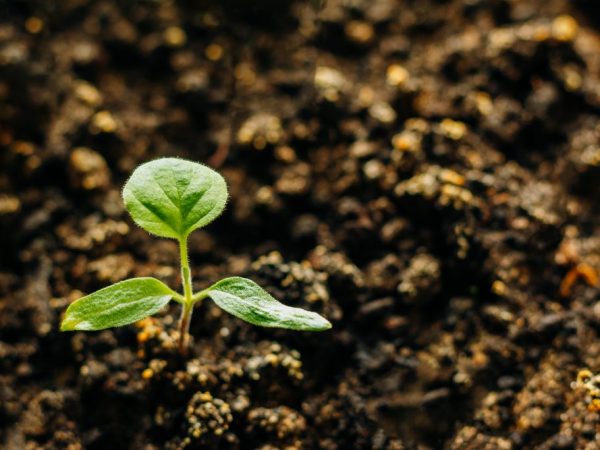Black leg of eggplant
Eggplant is a culture of the genus Solanaceae, a plant that loves warmth, does not tolerate temperature changes, an increased amount of moisture. All this provokes the appearance of diseases. The most famous is the black leg in eggplant.

Black leg of eggplant
Description
Blackleg is mostly a disease of eggplant seedlings.
This fungus lives in the soil. When comfortable conditions are created, it moves to the stem part of the crop to the point of contact with the ground.
The first sign of the appearance of a black leg is rotting and blackening of the neck of the roots. The most dangerous period when the disease affects the plant is from germination to the formation of 3 leaves.
The causes of the appearance of the disease black leg:
- planting crops in contaminated soil;
- excessive watering;
- lack of air circulation;
- neglect of the site;
- excess fertilizer;
- too much heat and moisture;
- temperature jumps.
As a result, blackening of the stem at the roots, constriction, inevitably occurs. Further, the stem rots, the eggplant dies.
The appearance of the disease is caused by the fungi Olpidium, Pythium, Rhizoctonia. Their habitat is the surface layer of the soil. They feed on the dead tissue of crops, as well as the root collar of the plant.
Top dressing with chemicals

Seedlings need feeding
To prevent blackleg disease from affecting the eggplant, you should take care of preventive measures. For seedlings, you need to buy proven high quality seeds. A prerequisite is to carefully choose the variety of vegetables. He must be resistant to this disease.
In order for the seedlings to be healthy, seeds should be sown during the period indicated on the package, not earlier. If the windowsill is cold and poorly lit, the seedlings will have low immunity.
For the prevention of blackleg in eggplants, pots and peat tablets are successfully used.
Before sowing, it is better to additionally treat the soil with a prepared solution of potassium permanganate (mix 3 g of potassium permanganate per 10 liters of water), you can also sprinkle it with ash, a mixture of ash, coal, river sand, or just spill it with boiling water. The treated soil needs to stand at least 2 days, otherwise the seeds will "burn". You also need to pour river sand on the soil surface: it will protect from mold, protect the soil.
Folk remedies
Feeding with chemicals is not the only method of dealing with blackleg in eggplants. There are many folk remedies that are just as effective.
As a preventive measure, the soil is steamed over boiling water or ignited in the oven before planting seeds for seedlings. To do this, it is poured into a metal dish, poured over with boiling water, covered with a lid and kept in an oven warmed up above 100 ° C for about half an hour.
A high-quality and reliable means for the prevention of the black leg of the root collar of eggplant seedlings is dusting the soil: ash or crushed coal is applied to its surface.
Another way to fight the disease is to water the seedlings prone to rot with a solution of baking soda (1 tsp. Soda for 1 tbsp. Water).
Conclusion
Any disease affects the plant during the period when the gardener ceases to adhere to the indicated pre-sowing techniques, sowing, or does not provide proper care. Weather conditions also have an impact on culture.
It is better not to pity the affected seedlings, but to remove them. This will help you get a high-quality and rich harvest.


